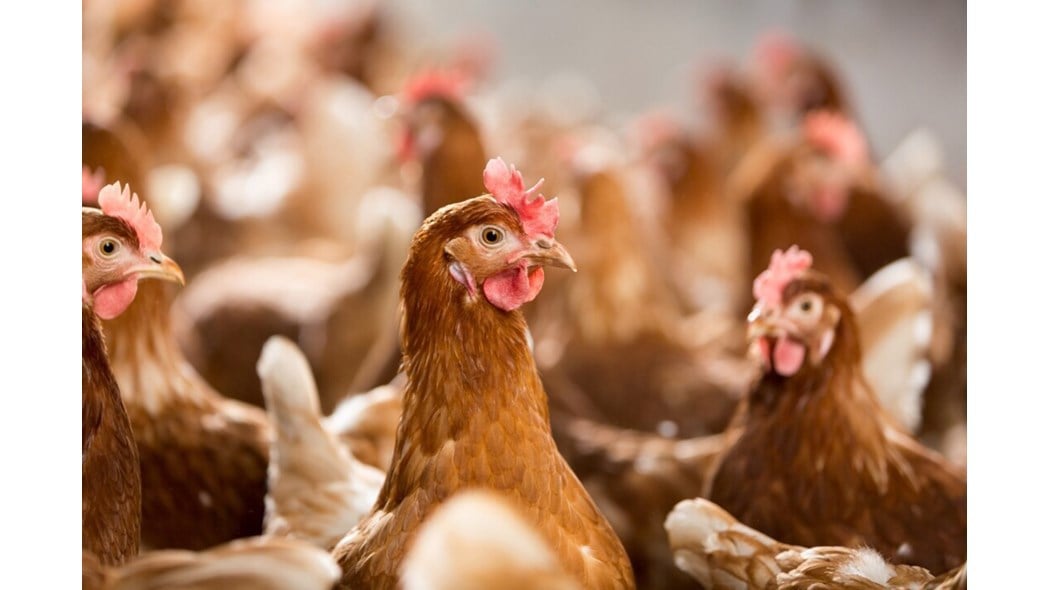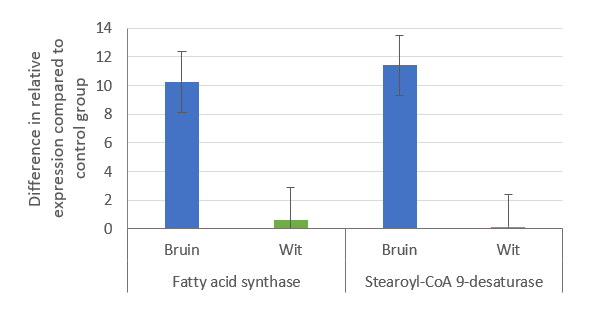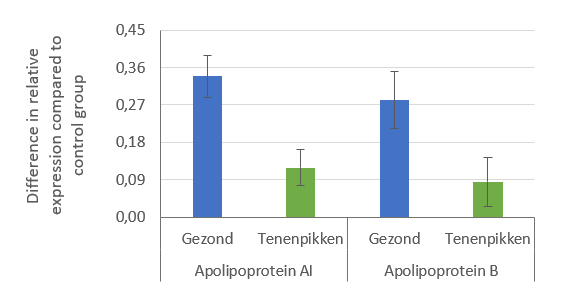Fat metabolism in laying hens may affect toe-pecking
- Poultry
Dutch compound feed companies ABZ Diervoeding, ForFarmers, Vitelia Voeders and Voergroep Zuid, in collaboration with Trouw Nutrition, have conducted a study into toe-pecking in laying hens. This problem is particularly present in white, highly-productive laying hens and leads to additional losses. Research based on a comparison between white and brown laying hens, on the one hand, and between hens that have been toe-pecked and those that have not, on the other hand, shows that the problem comprises a genetic component, where fat metabolism probably plays a major role.

Toe-pecking usually starts with hens pecking at their own toes. In severe cases bleedings may start, and other hens can begin to peck at the injured toes. In many situations, toe-pecking seems to start as a result of the toes' skin scales becoming flaky and ragged. Initially, the affected areas probably cause irritation, leading the hens to peck at them. A possible cause of skin flaking is a suboptimal composition of fatty acids in the skin, which is probably caused by an "abnormal" fat metabolism.
Transition
When egg production starts up quickly, the hen's fat metabolism is under a lot of stress. Where fat was previously only used for growth and maintaining the body’s homeostasis, fat starts to play an important in the formation of the egg yolk. If this transition does not happen optimally, the energy and fat supply to tissues, organs and limbs becomes insufficient. This may occur when the hen starts laying eggs, but also during the laying period in pairs with a high egg production and/or a (too) low feed intake. Genetic selection has probably contributed to 'modern' hens allocating available nutrients first to production, and only then to their body homeostasis.
White and brown hens
Comparing gene expression between white and brown hens reveals that they control their fat metabolism differently. For example, the expression of genes responsible for synthetising the 'fatty acid synthase' and 'stearoyl-CoA 9-desaturase' enzymes appears to be much higher in brown hens than in white hens (see Figure 1). The 'Fatty acid synthase' enzyme ensures that sugars are converted into palmitate (a building block for unsaturated fatty acids) and the 'stearoyl-CoA 9-desaturase' enzyme forms unsaturated functional fatty acids from the saturated palmitate.
Figure 1: The difference (P<0.05) in expression of fatty acid synthase and stearoyl-CoA 9-desaturase between brown and white hens measured in the liver

Fatty acid pattern
There was no difference in the levels of the major fatty acids (oleic acid, linoleic acid and alpha-linolenic acid) in the liver, yolk and abdominal fat between healthy and toe-pecked white hens. A difference in palmitoleic acid was found in abdominal fat, with toe-pecked hens having a lower level, expressed as a percentage of the total fatty acids measured, compared to healthy hens. Furthermore, higher levels of saturated fatty acids were found in the liver of toe-pecked hens compared to the liver of healthy hens. Some of these differences were also expressed in the levels of these fatty acids in the yolk. In absolute terms, these levels were not high. However, it seems that functional, unsaturated, fatty acids are formed in a somewhat different manner in the toe-pecked animals compared to the healthy animals.
Protein pattern
Apolipoprotein A1 and B are two proteins in the chicken's blood that play a role in the transport and absorption of fat. These proteins are produced in the liver, among other places, and after release into the blood, they transport fatty acids to peripheral tissues such as the skin. The expression of both genes was lower in the liver of toe-pecked white hens than in healthy white hens (see Figure 2).
Figure 2: The difference (P<0.05) in expression of 'Apolipoprotein A1' and 'Apolipoprotein B' between healthy and toe-pecked white hens measured in the liver.

These differences in gene expression suggest that the supply of energy and/or functional fatty acids to the skin of toe-pecked hens is disrupted. The liver is the most important organ for synthetising fatty acids, but the skin can also synthesize them. When the skin somehow can’t compensate for the deficiency in fatty acids from the liver, this may eventually affect skin quality. In a second trial analysis of fatty acid differences in skin from the hen’s feet revealed a difference in the levels of various fatty acids in the skin of toe-pecked and that of healthy animals. For example, lower palmitic acid levels and higher palmitoleic acid levels were found in the skin of toe-pecked hens compared to healthy animals. Palmitoleic acid is known to have an antibacterial function in human skin.
Product developed
The research has provided new insights into the possible role of fat metabolism in the development of toe-pecking. It also provides a possible explanation for the difference in occurrence of toe-pecking between brown and white laying hens. Based on the knowledge gained in this project, a product has now been developed that should reduce toe-pecking by regulating the fat metabolism. This product is currently being tested in field conditions.
Want to know more?
For more details, please contact Eric van der Wijst.